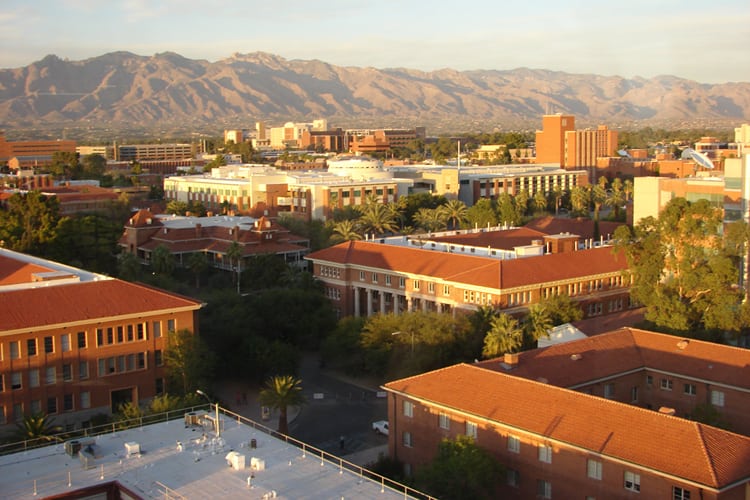The University of Arizona will remain in phase two of its reentry plan next week but will begin allowing larger in-person classes to meet on campus.
Last week, the university began allowing in-person instruction for classes of 30 or fewer that were designated as in-person courses at the start of the fall semester. Prior to that, most classes were held in an online format, regardless of how they were designated at the time of registration; only “essential courses,” such as research labs and performing arts classes, took place in person.
Beginning Oct. 26, classes of 50 or fewer that were designated at the time of registration as in-person courses or flex in-person courses, with a mix of online and in-person instruction, will have the option to begin meeting face to face, University of Arizona President Robert C. Robbins said today during his virtual weekly update on the university’s reentry progress.
Positive Tests Remain Low
Robbins said he continues to see encouraging signs that efforts to curb the spread of COVID-19 on and around campus have been effective.
Of the 6,867 COVID-19 tests administered on campus between Oct. 8 and Oct. 17, there were 44 positive results, for a positivity rate of 0.6%. Testing results are updated regularly on the university’s COVID-19 dashboard.
There are currently no students in campus isolation dorms, and the most recent day of wastewater testing, which has been conducted in dorms and other campus building to detect the presence of the virus, had no positive results, Robbins said.
“This is contributing to an encouraging turn over the past several weeks for Pima County, including the 85719 ZIP code, which contains the university,” Robbins said. “The Rt – the R naught of transmissibility of COVID-19 – number for this ZIP code was 0.35 on Oct. 15 – lower than many surrounding areas of Pima County.”
The Rt number refers to the average number of people who become infected by a single person with the virus.
Testing Blitz Planned Before Holidays
With the holidays on the horizon and just five weeks left until the end of the semester, Robbins said the goal is to keep cases down.
In the days leading up to Thanksgiving, the university will do a testing blitz, with registration beginning Nov. 6 and testing beginning on Nov. 9. To manage the anticipated volume, tests will be conducted by appointment only, rather than on a walk-in basis as they are now.
The university offers three types of tests: nasal swab antigen and PCR tests to detect active infections and blood-draw antibody tests, which can show whether or not a person has been previously infected.
In addition, students will be asked to fill out a survey detailing their travel plans before the Thanksgiving break. Robbins said students are strongly encouraged to finish the semester remotely if they travel out of the Tucson area for the Thanksgiving holiday.
“Our primary goal is to minimize the impact of student travel on community spread of COVID-19,” he said.
Robbins also emphasized the importance of getting a flu shot. Students can visit the Campus Health website for more information on flu shot clinics. Employees can find information on the Life & Work Connections website, under the Events & Workshops tab.
No Spring Break in 2021
The university will not have a traditional spring break next semester, said Provost Liesl Folks, who joined the briefing with Robbins and Reentry Task Force Director Dr. Richard Carmona.
The five spring break days will instead be spread out throughout the semester as “reading days” off for students. The start and end date of the semester will not change, with the semester starting Jan. 13 and ending May 5.
“The CDC is unambiguous about the fact that travel is one of the core ways that we spread the virus around the country, and we need to do our part as a community, as Wildcats, to reduce travel,” Folks said. “And, so, by taking spring break and instead taking those days and using them as reading days through the semester, it is a way for us to reduce the incentives to travel for our faculty, for our staff and our students – for our whole Wildcat community – and in doing so, make our community that much safer.”




